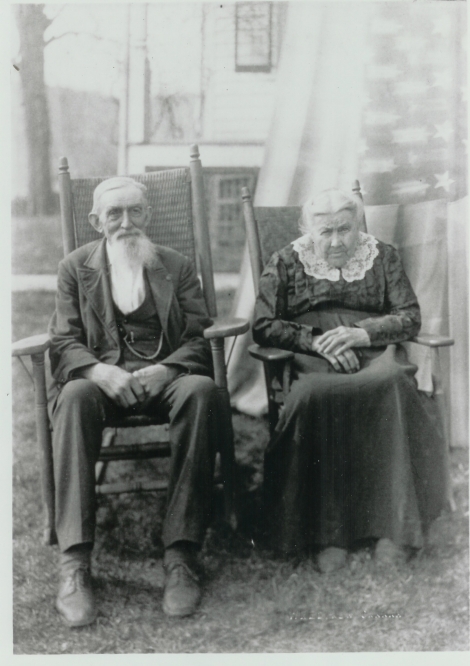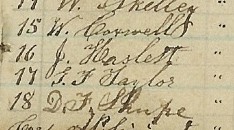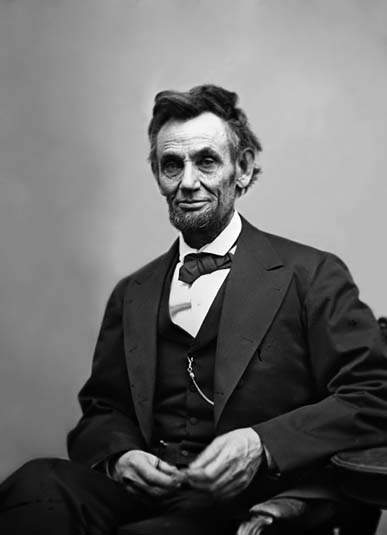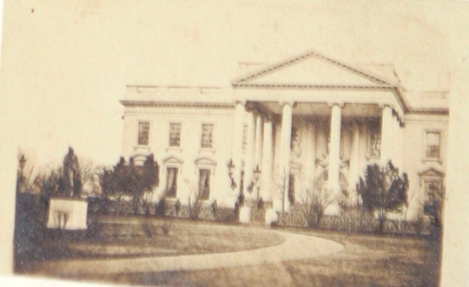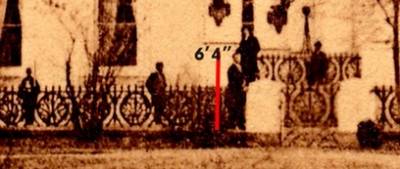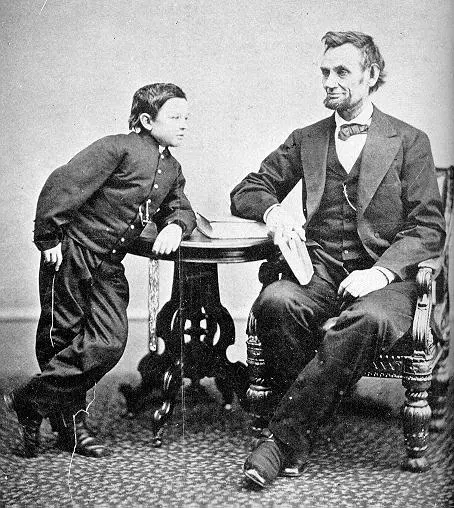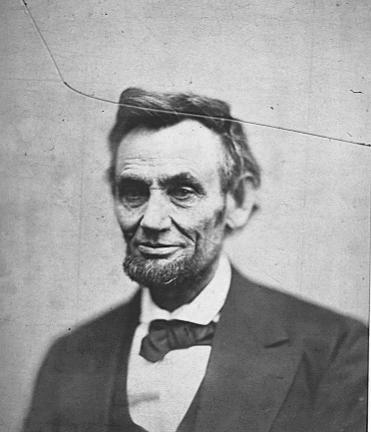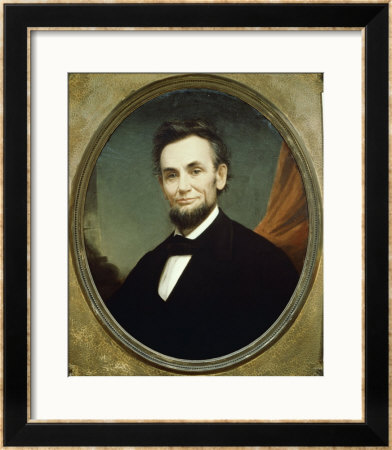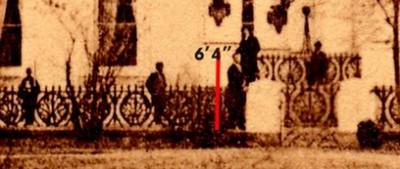November 10, 2008: Barry Cauchon
Hi all: I start a brand new feature on “A Little Touch of History” today. I have begun interviewing prominent people in their fields of expertise and my first guest was Harold Holzer, Lincoln scholar, who has assisted me on this blogs several times. The interview took place on November 4 – Election Day. I hope you enjoy our chat. Barry

“AN AWESOMETALK WITH” Harold Holzer, eminent Lincoln Scholar and Civil War expert.
Tuesday, November 04, 2008, 2:30p.m Duration: 36 minutes.
BC: Today I start a new feature on ‘A Little Touch of History’ called “An Awesometalk with”.
It’s my honor to introduce my very first guest, Mr. Harold Holzer, eminent Lincoln scholar and Civil War expert.
Mr. Holzer has authored, co-authored or edited over 31 books, written over 400 articles and participated frequently in various media events and lectures.
He is the Senior Vice President, External Affairs with The Metropolitan Museum of Art in New York City and the Co-Chairman of the United States Lincoln Bicentennial Commission.
On several occasions Mr. Holzer has generously shared his expertise with me to help ensure that the information presented here, in my blog, is accurate.
I want to thank Mr. Holzer for his kindness and welcome him to ‘A Little Touch of History’. Welcome Mr. Holzer.
HH: Thank you. It’s great to be with you. You’ve exhausted me just reading those credits. But now I know why I’m so tired.
BC: I’m sure (laughing). It’s kind of ironic that this is the first day we get a chance to talk live, although we have corresponded in the past, this being November 4th, Election Day. And that leads me into my first question. It’s been a long campaign for the candidates running for this presidency. How do you compare this campaign to the one that lead up to the election of President Lincoln in 1860?
HH: Well you’ve certainly touched on the more obvious of the first point, which is that the 1860 campaign, and all the campaigns in that era, was mercifully shorter. If you include the ‘run-up’, as they call it today, Lincoln gave some speeches in November of 1859 and then was elected a year later. But the interesting thing, and the big difference is that, after his Cooper Union speech in New York City in February of 1860 (arguably the speech that propelled him into position to be a contender for the nomination), he said nothing. He did nothing. He traveled nowhere. He stayed at home. So did two of the other three candidates for President. The only one who traveled was Stephen Douglas and he was mocked and taunted for doing that because it was not considered appropriate.
So it was certainly a noisy campaign. It was filled with activity. But the candidates, basically, were not part of all that frenzied activity. It was all surrogates.
BC: Once Lincoln won his election, it was that period between then and the inauguration, that a lot of very interesting reactions to that election took place. And it was pretty well the foundation for the Civil War that was to follow shortly.
You’ve just released a book “Lincoln President-Elect: Abraham Lincoln and the Great Secession Winter 1860 -1861”, which covers the turbulent months between the election and that inauguration. Can you tell us a little bit about your book and how President-Elect Lincoln handled himself during that crisis?
HH: Um yeah, I can tell you a lot!
BC: (Laughing)
HH: The harder way is to tell you a little (laughing).
Let me start by saying that it was a four month transition. My argument in this book is two fold. First I argue that his actions as President-Elect have not been fully appreciated, that if he had not preserved the integrity of the Presidency he wouldn’t have been President. He might not have ever been inaugurated. He took enormous precautions about his own safety, about political fairness, about creating the right kind of cabinet, about writing the right kind of inaugural address and also about being quiet when too much noise might have upset the precarious balance that was holding things together in the North, not just the South.
So I could have written a book that listed all of the challenges that he had in sections. In other words, I could have listed cabinet selection, inaugural address, the trip to Washington, political pressures, patronage appointments. But if I had done it that way it wouldn’t have given a fair or an accurate view of what Lincoln’s life was like, and really what the national life was like in that period. And it was turbulent. All of these things were happening at once. All of these challenges were hitting at once. And every day of his secession winter he face appointments, cabinet problems, writing correspondences whether to speak or not to speak, where to go, and also all the little personal things that happened. So I just put them together, day by day practically. And I think it gives a real portrait.
I can say that there was a critic who, otherwise wrote a very nice review of the book in the Washington Post, said that I had sort of spoiled things for her because she had long believed in the notion that Lincoln grew in office and became great as the challenges got greater. And I’ve ruined it by showing that he was great earlier. So I apologize, but that’s sort of the way it is.
BC: I think that’s a very good point, because he showed, prior to his running for President, a certain strength. But it does sound like in that particular secession winter he really came into his own!
HH: I think so. And I think it’s been read the wrong way by previous historians. They all thought that it was a period when he didn’t understand what was going on and he had to get there to “get it”. He made a commitment not to allow slavery to be perpetual and to expand, and he stuck to his guns, as far away as he was from the action. You know for every month he would have not done it he would have delayed real freedom and inequality in America by another ten years. So, I dare say Barack Obama would not have been a presidential candidate in 2008 if Abraham Lincoln had made the wrong moves in 1860 & 61.
BC: Just a quick sidebar Mr. Holzer. Were party politics as strong back then? Did the President really have power or did he have to follow party lines?
HH: I think party politics were even stronger!
Every city had a Republican newspaper and a Democrat newspaper. You could count on your party to back you even if you were ridiculous. And the other people would oppose you no matter how sensible you were. I think he worried about congressional alignment, about whether he would get his cabinet nominees ratified. And it was very partisan. I know that both candidates for President this time around talked a great deal about ending partisanship. Well you know it’s much better today then it was then, much calmer and much more open. I think we don’t appreciate how non-partisan we are in many ways.
BC: I noticed that your website lists the various locations you appear at and that you have a pretty strenuous tour schedule. Between book signings, book tours, lecturing on numerous Civil War and Lincoln events, and obviously giving TV, radio and blog (thank you very much) interviews, where do you find time to balance your life between these and all your other commitments?
HH: Ah, I have no idea how I do it. I mean I just survived the first couple of weeks here with Atlanta and Demoine and Springfield. And it’s really going to start with intensity now but fortunately the next week is all in New York City. I have four different talks next week.
I don’t know. I really love it. So I guess I absorb energy from the appearances and the book signings and the talks. And I guess I’m a little bit of a ham, so that helps. But I do have other things. I mean I have a full time job and I do take that very seriously. And I have a wonderful support staff here that helps the museum to continue its growth and its outreach to people from around the block and around the world. And I have a new grandson, so that’s pretty important too.
BC: Oh congratulations!
HH: You know it’s not that new. He’s 13 months.
BC: I have two step-grandchildren of my own and they’re an absolute blast!
HH: Oh it is just the greatest. It’s just as great as everybody said and that’s why the book is dedicated to him and to my late father for whom he is named. So, this young man has three books named for him in one season.
BC: (Laughing) Later this month, November 19th, the nation is going to celebrate the 145th anniversary of the Gettysburg Address.
HH: Right!
BC: And I understand that you’re going to be in Gettysburg, if I remember your schedule correctly, November 16th through the 19th!
HH: Right!
BC: And are you doing any public appearances or book signings during that time?
HH: Yes. The first thing I’m doing is the annual Lincoln Forum which is an event that meets every year. It’s the 13th anniversary. People register and pay out a registration fee. We have about ten scholars coming to give talks. So I am going to talk there. But I am also speaking at the Gettysburg Cemetery at the November 19 event. We’re unveiling the Lincoln Commemorative Coin on that day, which people will be able to buy and collect. And the revenue from which will support Lincoln activities in years to come. Also we’ll be doing a book signing. A few of my colleagues and I, who have written new books, will be doing a book signing at the new Gettysburg Visitor Center at around 2:00 pm on the 18th of November. So it’s going to be a busy time.
I may take a little detour to do something in Washington during the whole thing so…
BC: Something personally just for yourself (laughing)?
HH: More to come. I can’t talk about it much right now. Stay tuned!
BC: Stay tuned (laughing)!
The Gettysburg Visitor Center is a gorgeous place.
HH: I know. I’ve seen it. It’s really beautiful. And I love a book store that’s filled with people. So that’s what I love about it most, is that it’s filled with people who love to buy books about Lincoln and the Civil War.
BC: I was one of those people! I stood in a long line-up that day to buy my books. But it was worth it.
Another major event coming up in 2009 is obviously the 200th anniversary of Abraham Lincoln’s birthday. And as I mentioned earlier, you are the Co-Chairman of the United States Lincoln Bicentennial Commission.
HH: Correct.
BC: Can you highlight some of the national activities that are planned for next year and share them with us?
HH: I can! I think what I’ll concentrate on is February 12, Lincoln’s actual birthday. There are going to be big events in Washington such as the rededication of the Lincoln Memorial in the morning. There’s going to be a joint session of Congress. There will be the opening of a huge exhibition on Lincoln at the Library of Congress. Meanwhile there’ll be exhibitions at The National Portrait Gallery and the new Smithsonian of American History. That would already have opened. The night before the 12th, Ford’s Theatre will reopen with a special concert and a dinner and the opening of the Ford’s Theatre Museum. The Soldiers’ Home, where Lincoln had his summer White House, is going to unveil a Lincoln statue. Now that’s all in Washington. Things will be happening in other cities and anyone who wants to know more about what’s happening needs only go on www.lincoln200.gov and get the full schedule. There’s a lot going on.
BC: Terrific. Thank you. Regarding a couple of locations you mentioned, the Smithsonian and Ford’s Theatre, I’ve had some indirect advance looks at those exhibits and they are awesome.
HH: Yeah, they’re going to be great!
BC: I cannot wait to get back down there and see them when they’re open.
One thing with the Bicentennial approaching, there’s an overwhelming choice of books that will be coming out this year and next. I can’t even guess how many new books are coming out.
HH: We think there are going to be about 30 between the fall season that began about a month ago and the end of ‘09.
BC: And overall, would there be about a 1000 books that have been written over the years?
HH: Oh, maybe 10,000…
BC: Oh really! Wow!
HH: If you include pamphlets. Yeah.
BC: Well I’m looking to help your average student, who either wants to begin, or further their education, on the 16th President of the Unite States. Are there any books that you could recommend that are more beginner level?
HH: Certainly, every book I’ve ever written would be great! (Laughing)
BC: (Laughing) Oh good!
HH: “Team of Rivals” by Doris Kearns Goodwin was really wonderful. “Lincoln” by David Herbert Donald, for people who know about history and just want a good life with Lincoln. Those are two internally wonderful books. And then for people who know more about Lincoln already, there are some among this group of new books, (such as) “Lincoln and His Admirals” by Craig Symonds, “Tried by War: Abraham Lincoln as Commander in Chief” by James McPherson. There’s a book about Frederick Douglass. There’s a new book about Lincoln and Charles Darwin. There’s a second book coming about Lincoln and Darwin. There’s a book about Lincoln and Robert Burns. So you can go from very general to very specific very easily. All the good writers are coming out with Lincoln books this year. I have four of them coming out between now and next fall. So you have to be in this market. You can’t just wait. So I decided to plunge in.
BC: I know the timing couldn’t be better.
HH: Yeah.
BC: I’m very anxious to get my hands on as many as possible.
HH: Good luck. It’s not a great economic time to be buying them all, but I guess it’s worth it because the literature is so great.
BC: During your career you’ve been honored with many awards and appointments, and have met and worked with famous politicians and statesmen. Would you describe one or two instances that really stood out as special for you?
HH: Sure. I guess I’ll address the political side, as opposed to the show business side, which I also love. I have a real weakness for that I must say. I’m a real fan.
I think the two are from 12-13 years ago. <The first being when> Mario Cuomo and I published our book “Lincoln on Democracy”. It had been inspired originally by a delegation of teachers from the Solidarity Union of Poland who had come to visit Governor Cuomo. They said to him that they really needed books now that their country was escaping from the constraints of the Iron Curtain and becoming free and independent. Cuomo suggested that they study Lincoln, and they said that they had no Lincoln, that the Communists and the Nazis, between the two of them, had removed all of the Lincoln. So he said he would get a book together and that’s when we wrote our book “Lincoln on Democracy”. And we got Lincoln scholars around the country to contribute and to suggest great letters and writings by Lincoln. And it was translated into Polish and Japanese and Hebrew and Indonesian and of course came out in an English language edition.
The most memorable political, diplomatic event was when Lech Walesa came from Poland to receive the first Polish language copy. That was a pretty unforgettable day. The man who had helped liberate the country and who had wanted Lincoln on the bookshelves.
And then I guess the other, to be completely non-partisan, was when President Bush invited Sam Waterston and me, to deliver our “Abraham Lincoln: Scene and Heard” program in the East Room of the Whitehouse. That was pretty thrilling, I must say. We had done it for the first President Bush and we were invited to do it for President Clinton as well but President Clinton was busy campaigning for Hillary. So we did it to a full auditorium but with only President Clinton on the phone.
BC: I think those are both really special stories.
HH: Oh yes.
BC: When we have an opportunity, I’d love to talk to you more about the Polish story.
HH: Oh sure. That’s now lost to the mist of memory ‘cause we didn’t record things the way we do now in those days. But anyone who wants to see the East Room thing from a couple of February’s ago, or I guess it’s more like three now, you can get them on C-Span’s website. It’s in the C-Span archives and you can buy a DVD from C-Span and see the President and us and see that whole program.
BC: Excellent. Are there any historical figures or events that you are personally interest in outside your field of specialty?
HH: Oh yeah! I read a lot about FDR and Churchill. I was actually inspired to do “President-Elect” by reading a book by a friend of mine, Jonathan Alder, on Roosevelt’s pre-presidential period and his first hundred days as President. He described how he wouldn’t cooperate with Herbert Hoover and it sort of inspired me to start looking into Lincoln again. So, I can thank FDR for Lincoln just as FDR turned to Lincoln, I turned to FDR.
BC: (Laughing)
HH: I used to read everything about John F. Kennedy. You know I was 11 years old when he was elected. I was enormously interested in politics because of him, and in government. And of course his death broke our hearts. And when it was over I read. I got all the picture books and the Life Magazine books and the Sorenson book and the Schlesenger book. And if I ever have time, I’d actually like to read the second wave of analysis of Kennedy.
BC: Do you think Kennedy’s assassination spawned what I’ll call an interest in historians to start looking back at Lincoln with fresh eyes because of their similar ending?
HH: You know it is…it is an interesting point I must say. I’ve never been asked that question before. It’s a really good question. It is interesting because it is almost ironic in a way, because Kennedy was very involved in planning the Civil War Centennial. When he got to be President, he found out that not much had been done to get the country ready to start celebrating the 100th anniversary of the Civil War. He got there on January 20th and the first event was supposed to be in April at Fort Sumter. And he really organized it. He fired the guy who was running it. He hired a new person. And ultimately, this person he hired had to find Lincoln’s catafalque for his coffin to rest on in the Capitol. So it came full circle.
But he was very interested in it. And of course, when he was killed, people published this laundry list of eerie similarities. You know, everything from the serious to the … both men were succeeded by a man named Johnson.
BC: Oh yes.
HH: Do you remember all those?
BC: Yes.
HH: Same number of letters in their names. One was killed in Ford’s Theatre, the other was killed in a Lincoln car which was made by Ford. I mean it just went on and on. One had it that Kennedy had a secretary named Mrs. Lincoln and of course they were elected a hundred years apart. So I think it did spur interest and it certainly spurred interest in the assassination idea.
BC: I think that’s where my interest in Lincoln arose. It started with Kennedy. I was living in Virginia at the time. I was only age five at the time of his death but…
HH: You could have not told me that you were younger (laughing)
BC: (Laughing)
HH: We could have gone through the whole interview and I could have just fantasized that you were old.
BC: (Laughing) Not by much. You know, I have great respect for my elders. So I…(laughing)
HH: I am having a big birthday this year so it’s a touchy subject. But it’s better to have it then not have it!
BC: On another personal note, what do you like to do in your spare time, if you have any? Do you have hobbies or interests?
HH: You know I guess playing with the baby is my big interest now, when I can. I like to go to the theater. I go to one opera a year but I used to like to do that. And I love baseball so I go to a few baseball games every year. I used to watch baseball games like an idiot, just sit there and watch them. I don’t do that anymore. I do other things. But I watch baseball while I’m writing. It’s a great sport to watch when you’re writing ‘cause you don’t have to watch it all the time and if something happens you can just look up and see the instant replay.
I have been watching 10 seasons of the Yankees without paying complete attention. And as an historian, I have to bid a sad farewell to the stadium this year. But that’s about it. As you say, I don’t have much time to do much of anything. But I do get to go to the theater.
One thing I’ve given up is the movies, which I regret, because I used to love going to the movies and now it’s so easy to see them on TV.
I love to read murder mysteries, British murder mysteries basically. And my wife and I try to watch one British murder mystery every weekend. You know some kind of thing that we get from the BBC catalogue or watch on one of the mystery channels or channel 13 mysteries. You know…PBS mysteries. That’s about completes my rather boring life.
BC: Well the grandson is…
HH: That’s the key!
Now if I can just complete everything to make him like Lincoln, the Yankees, and go to the theatre, then I’ll have the perfect grandson. But he’ll be perfect even if he hates them all.
BC: That’s true. But it can’t hurt to try some light handed influence.
HH: Exactly.
BC: (Laughing)
BC: Now I’m going to take you way back for a second, when you were a high school student.
HH: Right.
BC: What was your experience with history at the high school level? And the reason I’m asking is…is there anything you can say to today’s students who really struggle with getting an interest in history?
HH: You know I have to say that I’m sorry about that. And I wish I was a better example of the right way to do it. I’m really not. I got brought into it by a 5th grade teacher. She inspired me to read. But I was never a really good listener in class. I don’t think you’d call it ADD but I was pretty bad in school. I wasn’t violent but I was, you know, the class clown kind of person. I think it was probably because I was younger than everybody in school having been advanced twice which was a big mistake socially, but not otherwise. And I never really conformed to what was expected of me, either in high school or in college. Otherwise, if I had realized that this is what I wanted to do, I probably would have gone onto the academy and worked in a college. But because I was such an unpredictable nutcase I wanted to do a lot of different things. I always wanted to work in television and I got to work in public television for six years. I always wanted to be in politics. Not to be the candidate, but to work in politics. And I got to work in a United States senate campaign, in mayoral campaigns, in congressional campaigns, and in gubernatorial campaigns and worked for a governor and a mayor. So I got that out of my system. Then to be asked to work at the Metropolitan Museum, the greatest cultural institution in the country, was the icing on the cake. And that’s been 16 years…during which time the Director and the President have encouraged me to lead my double life as a scholar as well.
So I’ve always been sort of on the outside looking in. And I guess I’m not a good person to advise people on listening in school, because I didn’t listen. I found it tedious and I wanted to read my own stuff. But I don’t think the teachers are making it any easier because the textbooks are not particularly appealing. You know, using the mass media, using DVDs, using the History Channel, it’s not a bad introduction. I think the academics ought to get off the high level snobbishness about that. Anyway we can get people interested, they’ll become readers eventually…
BC: I agree.
HH: …and better citizens as well. You know you don’t have to be a historian but it’s good to know your past because that’s the way you can trust the future.
BC: It’s interesting to me, especially when I relate it to the History Channel, or any of these other approaches you mentioned to help reach the kids. It’s so fast paced nowadays that kids want to be entertained and I think you’re right. I think that’s a tremendous way to capture them rather then doing the staid old way of “Read your books…”
HH: History has great stories, and great stories are entertaining. And I think this political season has been great for history because history is being made as we speak. And I think kids know that. And I think they’re excited about it and they’re thrilled to be living through it. If you don’t know that this moment is historic, no matter who wins this election, the people will know. But it’s either going to be an African American man or the first woman on a national ticket. And these are times that really shake things up. And how did we get here? Why didn’t we get here sooner? That’s what we should want to know. And I think people do want to know more than ever.
BC: I did gloss over your interest in show business so if I can just back track a second I know that this is a love of yours. Did you want to share a story or two from this area of you life?
HH: Well you know. I really think that Lincoln is a character who needs to be brought to life and not only on the page. And that’s why I’ve been lucky enough for these last 8 or 9 years, to do a series of performances with Sam Waterston from Law & Order who I’m sure you know.
BC: Yes.
HH: I met him 20 years ago or more when he was filming Gore Vidal’s “Lincoln” in Richmond. And we became friends and he’s been just delightful wanting to do this. And we’ve done it in Illinois and Washington and Connecticut and the Metropolitan Museum and the White House and Little Rock and ah …
BC: So you take your show on the road?
HH: Yes, we take it on the road! And we’re going to do it one last time by the way. Ford’s Theatre on February 26th and then we’re going to close it down forever.
BC: How does one get a ticket to that?
HH: I think they’re going to be easily available and free!
So people just have to check in with Ford’s Theatre because it’s not part of their regular theater program. They’re doing a series of Lincoln events. So I think it’s going to be exciting. And I think it’s going to be accessible. I hope we fill it up. And I’m sure he will. You know…I don’t think I’m the attraction!
BC: Well for me you would be the attraction…
HH: And now I’m starting to do some of these with Richard Dreyfuss, which is a whole different story. Sam Waterston is like meeting a Shakespearean actor. But Richard Dreyfuss is more like meeting me, because he sort of is, I’m not going to say a Mini Me, because I’m his Mini Me! He and I grew up in the same area and if he had not left for California with is dad when he was about 10 he and I, and my wife, would have all gone to the same high school in the same year.
So we’ve become close. I did go to see a movie recently. I got to see “W” with him in it and it was a lot of fun.
And he’s done Lincoln now. So it’s a whole different kind of Lincoln, but it’s great fun.
BC: I bet it’s interesting to get the two dichotomies of …
HH: I know! (laughing)
BC: At this point, you’ve given me well over half an hour of a wonderful interview which I thought we might do in 20 minutes so…
HH: Well, I know. I talk too much. I’m sorry (laughing)
BC: Not at all. I could probably go on for an hour, but that’s…
HH: Well, if anybody who is not completely exhausted and wants more information, I do have a website. And I correspond with people on the website. There are also my book things and appearances and pictures. It’s Harold Holzer.com. And I hope people visit me there and I’d love to talk to them.
BC: Absolutely. I’ll post it at the bottom of this blog and add a link on the blog as well.
So, for the last question, what does Harold Holzer have planned over the next 2 to 3 years?
HH: I’m glad you asked!
BC: (Laughing)
HH: Probably not a good idea for marketing purposes!
BC: (Laughing)
HH: I’ll need a special marketer to have so many other things going on so soon. But I am the co-editor of a catalogue that’s coming out for the Library of Congress exhibition. It’s called “In Lincoln’s Hand”. It’s going to be a beautiful collection of absolutely gorgeous scans of some of Lincoln’s greatest letters and speeches from his childhood to his death. Never reproduced so beautifully and each one is going to be accompanied with a commentary by a distinguished observer. We have all four ex-Presidents, Sam Waterston, Steven Spielberg, Liam Neeson. Great writers like Tony Morrison and Adam Gopnik and E.L. Doctorow and, I know I’m forgetting people, but we’ve really got a wonderful list of people. So that’s one project.
Then I’ve got a book coming out from the Library of America called “Lincoln Anthology” which is a collection of great literature about Lincoln over the last 150 years. Ranging from William Cullen Briant on though Whitman and Sandburg, up to Gore Vidal and ending with Barack Obama’s speech in Springfield when he announced his candidacy for President. So that’s a big project.
And then I’m the guest curator and historian at an exhibition at the New York Historical Society next fall called “Lincoln and New York”. Yes there is a New York story and we’re going to tell it. And I’m sure we’re gonna make every effort to take complete credit for Lincoln ‘cause that’s what New Yorkers do.
BC: (Laughing)
HH: And I think that’s enough for awhile.
BC: Do you have a favorite Lincoln quote?
HH: A favorite Lincoln quote! You know, I’ve become so immersed in the period between the election and the inauguration that my new favorite quote is a very unserious one. When Lincoln got really angry and the people were expecting him to talk too soon, about too much, and to sooth and beg the South to let him be President, even though he felt he’d legitimately won the election, he said “I will not be a sucked egg, all shell and no insides!” That’s my new favorite quote.
BC: (Laughing)
HH: None of us wants a president who’s a sucked egg! We want them whole. And hopefully that’s what we’ll have with our new president as well.
BC: This has been a wonderful interview and I want to thank you Mr. Holzer for joining me today and sharing your thoughts with my readers. As mentioned earlier, you have a new book out “Lincoln President-Elect: Abraham Lincoln and the Great Secession Winter 1860 -1861”. And you folks out there need to look it up and read more from this great scholar.
HH: Barry, thank you very much.
BC: You’re very welcome. Thank you.
END
EPILOGUE:
Since the interview, the country has elected its next President of the United States in Barack Obama. As Mr. Holzer indicated in this interview, it’s an historic time. It’s living history. Watch it closely. Live it now, and in a few years, remember that you were here to experience it.
To close, I have to say that I truly enjoyed this conversation with Mr. Holzer. For me, there is nothing like talking to an expert about something you love. So many holes in one’s education get filled in, resulting in a more complete picture.
This interview was recorded live and has been edited (to take out all the ums, ahs and ‘poorly asked questions’ that I stumbled through). If time permits, I’ll post the audio file of the interview so you can hear Mr. Holzer’s words and ‘charm’. He really is a nice man!
Mr. Holzer’s generosity cannot be appreciated enough by me. Thank you again.
Below is the information I promised earlier.
Harold Holzer’s website is: www.haroldholzer.com.
Mr. Holzer’s Gettysburg appearances from November 16 – 19 are listed below.
- Nov 16 • Opening Night Speaker for The Lincoln Forum, Gettysburg, PA (speaking on Lincoln: President-Elect)
- Nov 17 • Lincoln Forum Book Signing at the Holiday Inn Gettysburg, 516 Baltimore Street, Gettysburg, PA
- Nov 18 • Lincoln Forum Book Signing at the Gettysburg Visitor Center, 87 Taneytown Road, Gettysburg, PA
- Nov 19 • Lincoln Forum “Lincoln Commemorative Coin” unveiling at the Gettysburg Cemetery, 87 Taneytown Road, Gettysburg, PA.
—————————————————————–
Other posted interviews to date:
“An Awesometalk With” Dr. Thomas Schwartz, Illinois State Historian
(posted on December 08, 2008)
“An Awesometalk With” Robert Krauss, 509th Composite Group Historian
(posted on December 16, 2008)
—————————————————————–
Best
Barry
outreach@awesometalks.com
.










